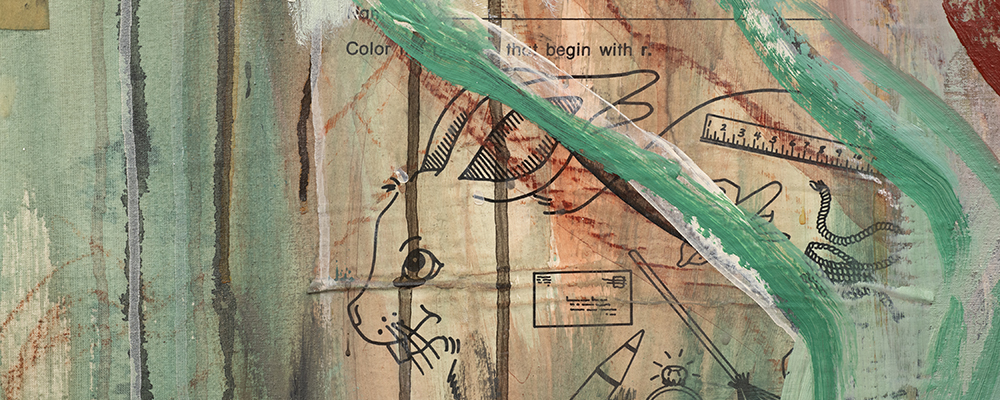Born January 15, 1940 at the St. Ignatius Mission of the Flathead Indian Reservation, Jaune Quick-to-See Smith is an enrolled Salish member of the Confederated Salish and Kootenai Nation, Montana. Smith received an Associate of Arts Degree at Olympic College in Bremerton, Washington in 1960, a BA in Art Education from Framingham State College, Massachusetts in 1976, and an MA in Visual Arts from the University of New Mexico in 1980.
Since the 1970s, Smith has developed a distinct visual language, melding appropriated imagery from commercial slogans and signage with art-historical and personal narratives that result in complex abstract paintings and prints. Layering vivacious, energetic brushwork with collaged materials and references to Indigenous traditions, Smith’s multi-faceted works are grounded in themes of personal and political identity.
Tia Collection is pleased to loan three works by Smith to the upcoming exhibition, Poetic Justice: Judith F. Baca, Mildred Howard and Jaune Quick-to-See Smith, on view at the New Mexico Museum of Art from October 9, 2021 – March 27, 2022.
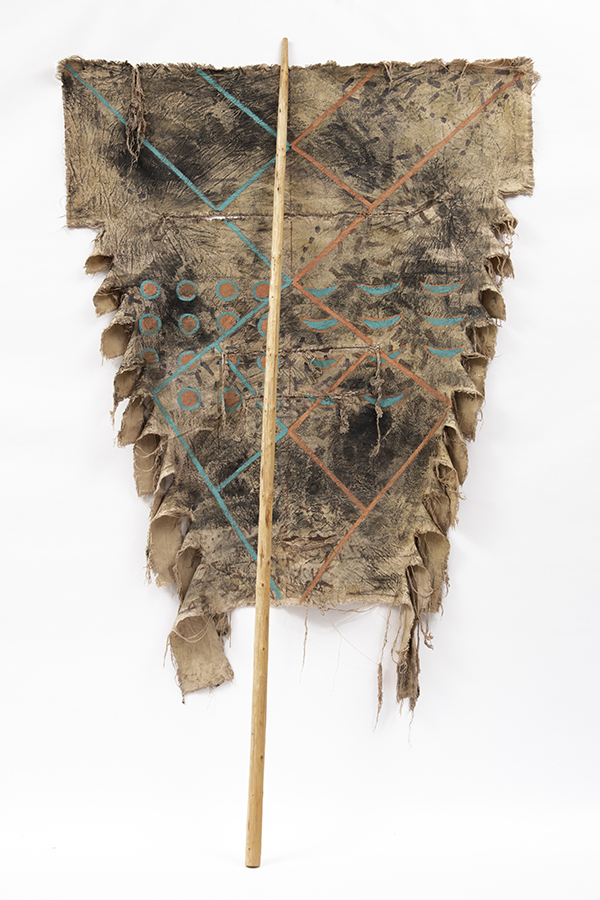
Smith created Ronan Robe #4 as a graduate student at the University of New Mexico. Seeking a way to connect the ancient skills of Salish women within her work, she employed the traditional method of hide tanning – a “life skill that Salish and Kootenai women are preordained to learn.” She elaborates, “Large organic shapes of canvas became my abstract paintings, made with oil paint, charcoal, wax, and smoke. Digging a pit in my backyard for burning cottonwood root, allowing it to smolder, then rolling the canvas to enclose the smoke created a work pattern, a sense of woman’s work. I sought that physical connection from my traditional past to my contemporary present.” (Braddock, Kusserow, “Nature’s Nation: American Art and Environment,” p. 314-15)
Image: Ronan Robe #4, 1977, oil, beeswax, charcoal and smoke on canvas, 66 by 59 inches (167.6 x 149.9 cm), Tia Collection
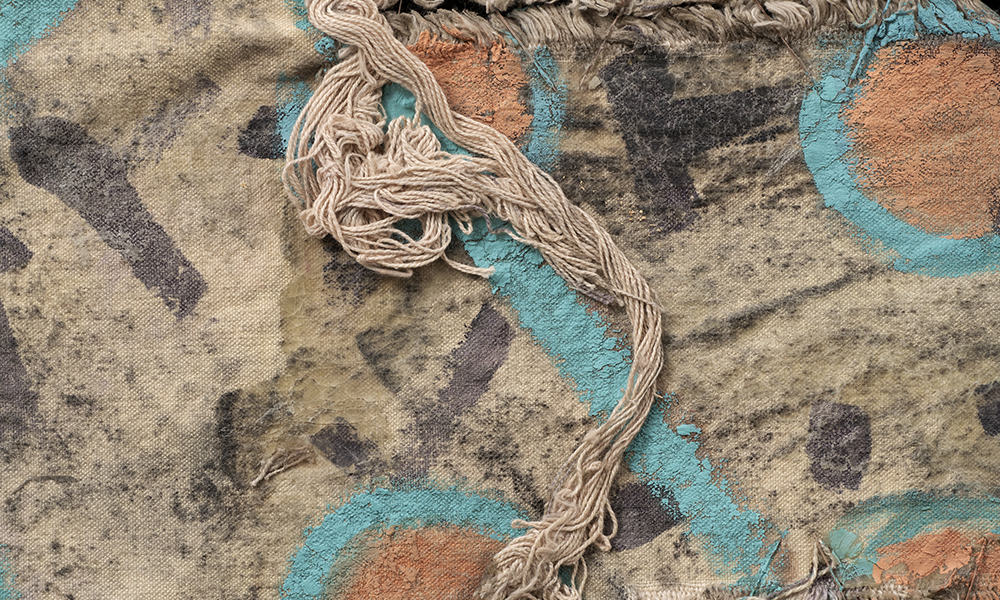
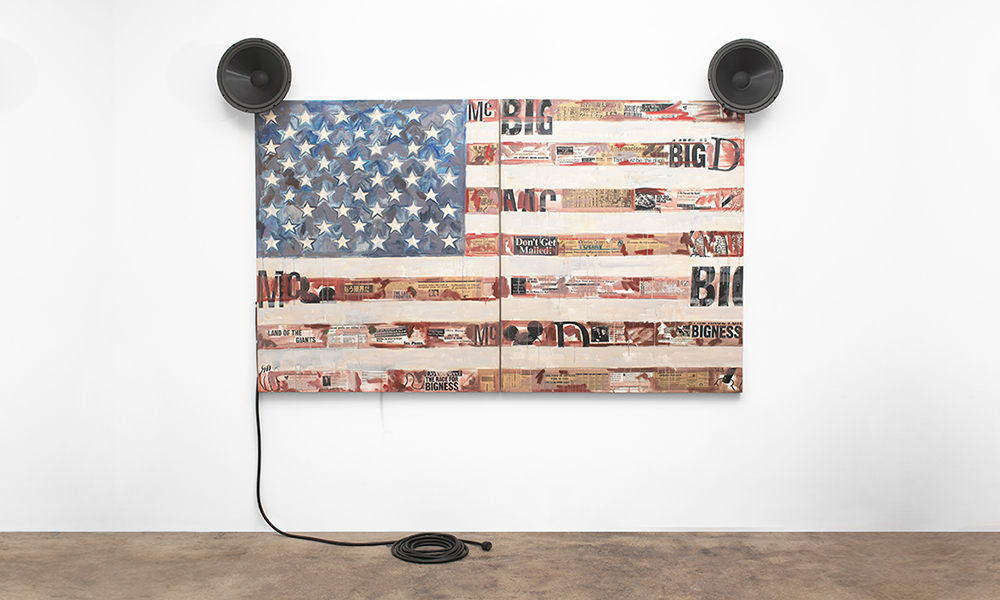
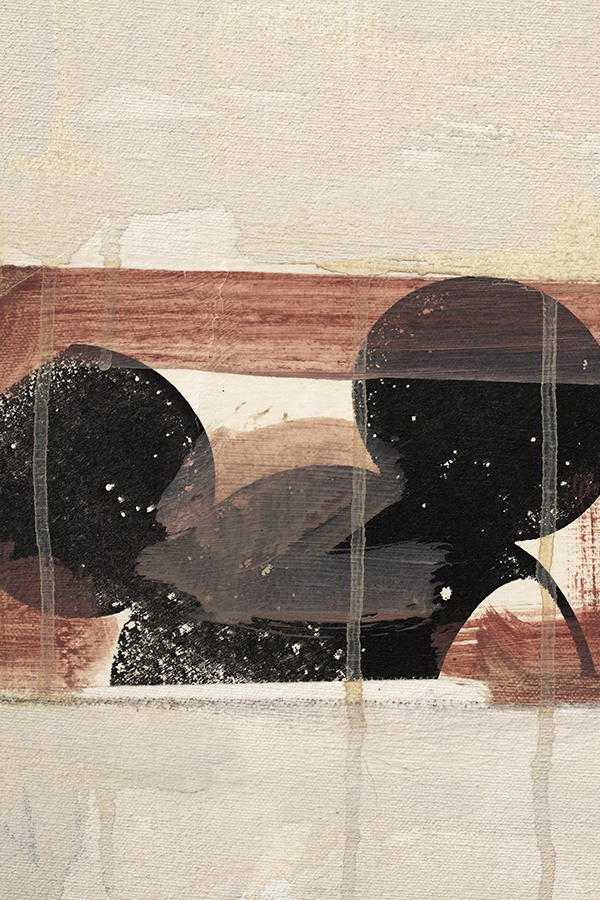
I See Red: McFlag comments on the relationship between American nationalism, consumerism, Native American oppression, and environmental destruction. Depicting the American flag, with press clippings from international publications embedded into the red stripes, the word “BIG” recurs throughout the composition, alongside references to Disney and Mickey Mouse.
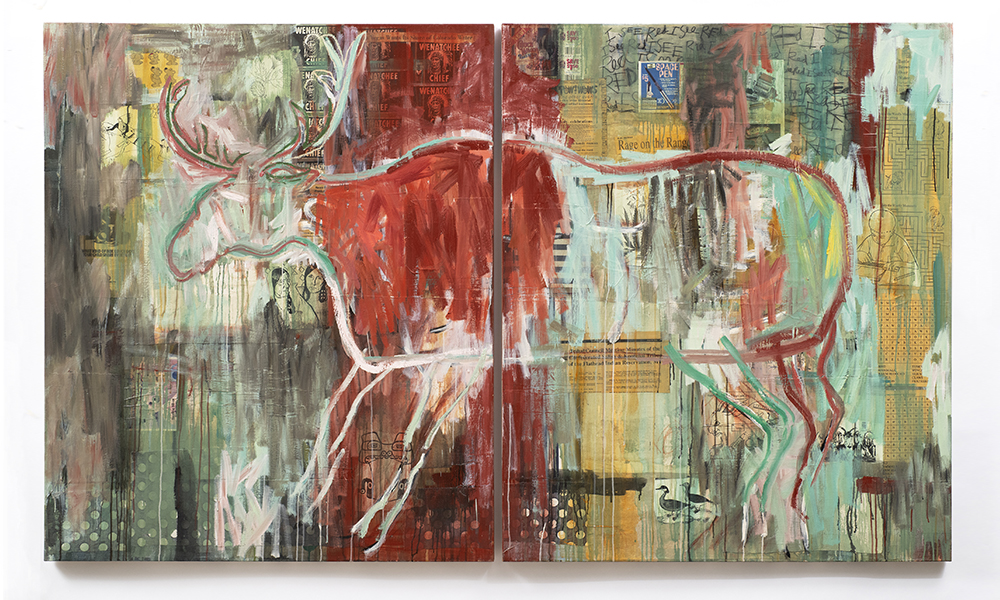
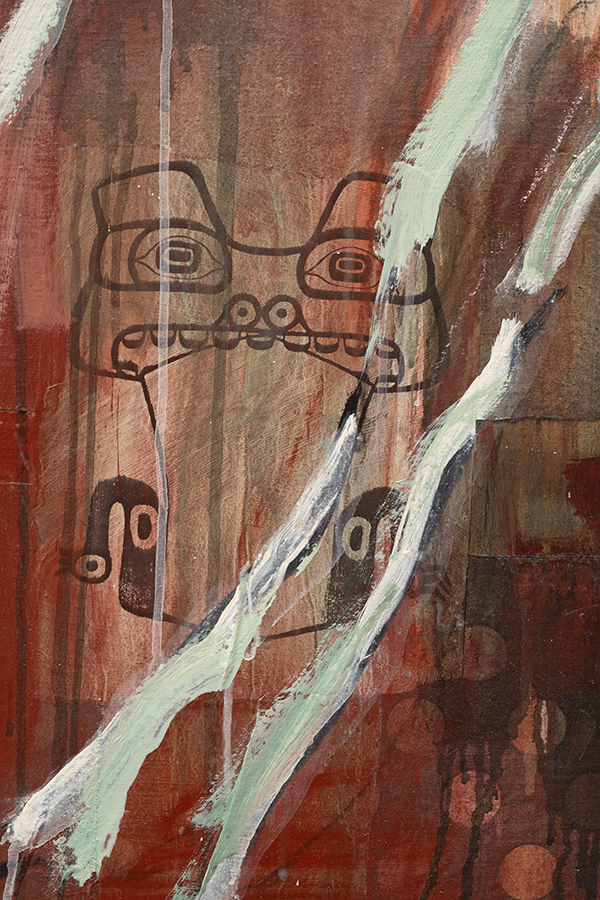
“For all the primal nature of her origins, Smith adeptly takes on contemporary American society in her paintings, drawings and prints, looking at things Native and national through bifocals of the old and the new, the sacred and the profane, the divine and the witty.”
– Gerrit Henry, (Art in America, 2001)

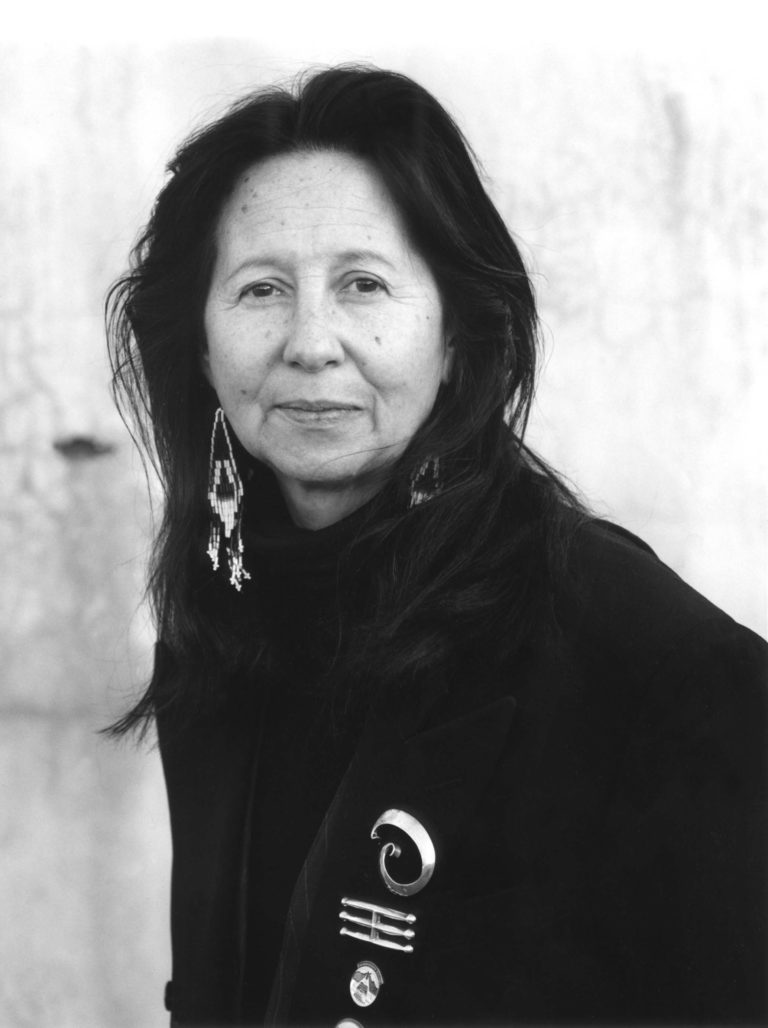
Smith has received numerous awards, such as the Academy of Arts and Letters Purchase Award, New York, l987; the Joan Mitchell Foundation Painters Grant, 1996; the Women’s Caucus for the Arts Lifetime Achievement, 1997; the College Art Association Women’s Award, 2002; 20th Annual Governor’s Outstanding New Mexico Woman’s Award, 2005; New Mexico Governor’s Award for Excellence in the Arts, 2005; Art Table Artist Honoree, New York, 2011; Visionary Woman Award, Moore College, Pennsylvania, 2011; elected to the National Academy of Art, New York, 2011; Living Artist of Distinction Award, Georgia O’Keeffe Museum, 2012; NAEA Ziegfeld Lecture Award, 2014; and The Woodson Foundation Lifetime Achievement Award, 2015. In addition, Smith has been awarded honorary doctorates from Minneapolis College of Art and Design, 1992; Pennsylvania Academy of Fine Arts, 1998; Massachusetts College of Art, 2003; and University of New Mexico, Albuquerque 2009.
Her work can be found in the collections of the Museum of Modern Art, Quito, Ecuador; the Museum of Mankind, Vienna, Austria; The Walker Art Center, Minneapolis, Minnesota; The Smithsonian American Art Museum and National Museum of Women in the Arts, Washington D.C.; The Denver Art Museum, Colorado; the Albuquerque Museum of Art; New Mexico Museum of Art, Santa Fe, New Mexico; Crystal Bridges Museum of American Art, Bentonville, AR; Colby Museum of Art, Waterville, Maine; Saint Louis Art Museum, Missouri; Virginia Museum of Fine Arts, Richmond; Carnegie Museum of Art, Pittsburgh, Pennsylvania; Nasher Museum of Art at Duke University, Durham, NC; the Museum of Modern Art, the Brooklyn Museum, the Metropolitan Museum of Art, The Whitney Museum of American Art, New York. Most recently, her work was acquired by The National Gallery of Art, Washington, D.C., the first by a living Native American artist.
Written and designed by Sarah Greenwood.
Video: An interview with the artist Jaune Quick-to-See Smith, Smithsonian American Art Museum.

